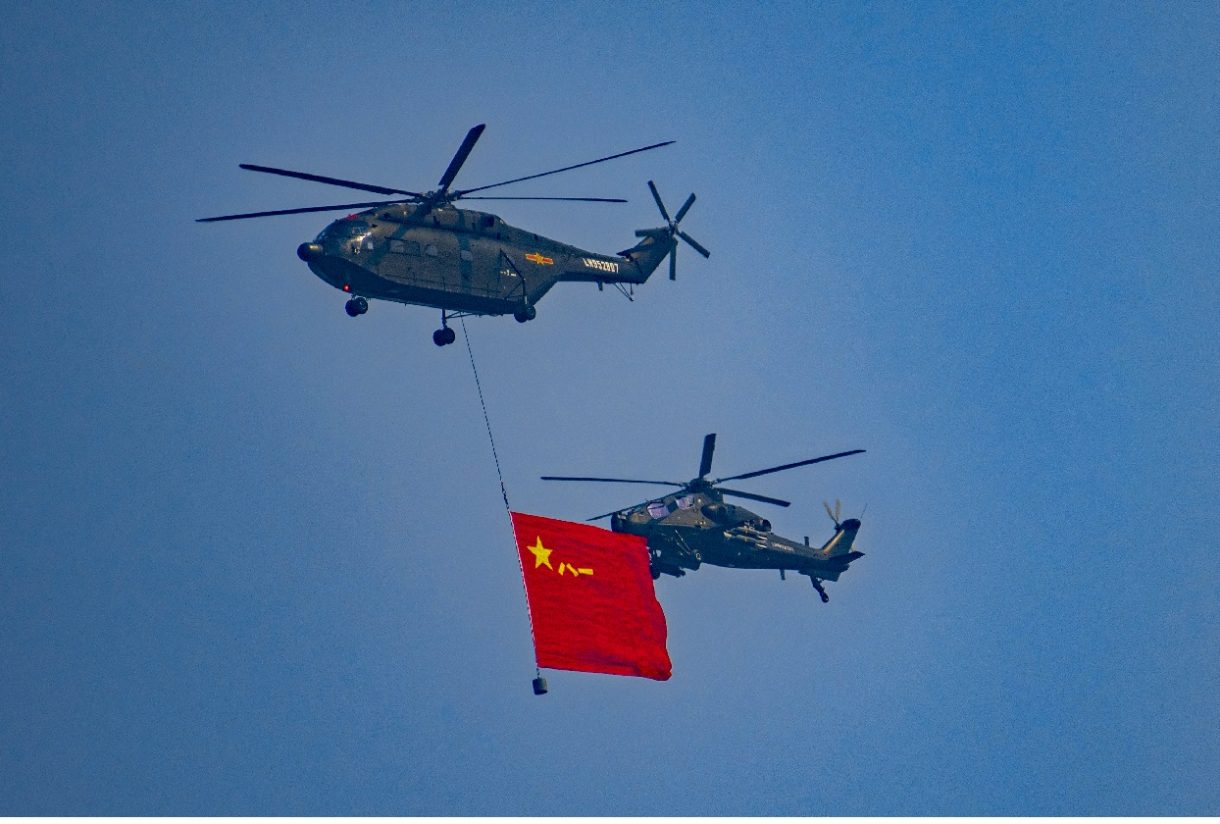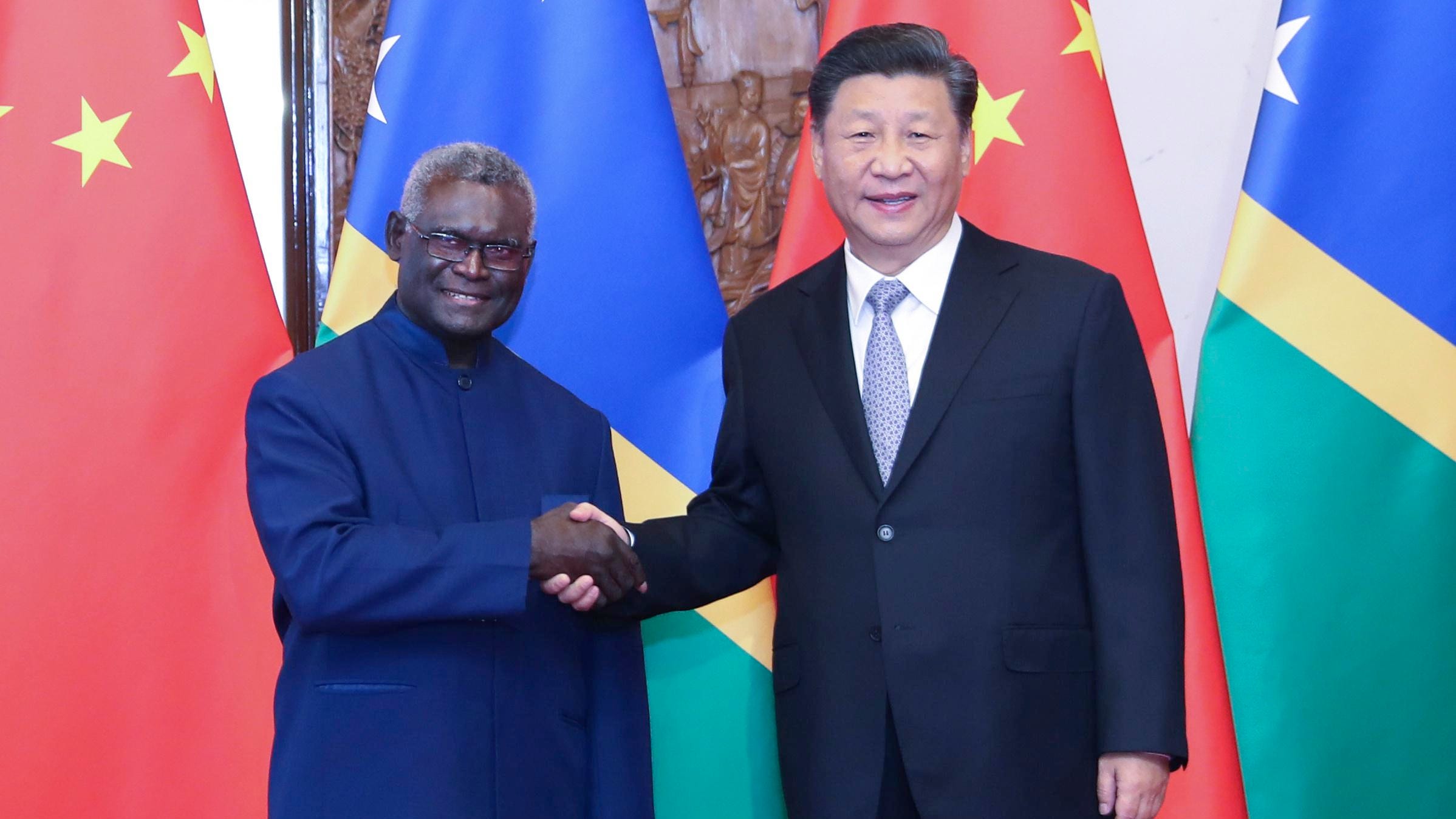The United States is reportedly expanding the Lombrum Naval Base on the island of Los Negros in Papua New Guinea (PNG), months after Washington urged the Pacific island state to reject a security deal from its rival, China.
The United States recently announced that it is considering three projects for Lombrum Naval Base on the island of Los Negros in Papua New Guinea: renovating a dilapidated small boat jetty measuring 118 feet in length; building a 7,556-square-foot Regional Maritime Training Center; and building a 7,351-square-foot small Boat Team and Boson Facility.
These projects are projected to cost between $11 million and $25 million in total.
As per the announcement, “These…projects will support the PNGDF (Papua New Guinea Defence Force), maritime security operations, U.S. military personnel participating in joint exercises, and USINDOPACOM (the United States Indo-Pacific Command is the unified combatant command of the United States Armed Forces responsible for the Indo-Pacific region) Theater Campaign Plan with various critical facilities located at Lombrum Naval Base.”
With China pushing into the Pacific with an eye on expanding its influence in the region, former US Vice President Mike Pence announced in 2018 that the US would collaborate with Australia and Papua New Guinea to revitalize Lombrum Naval Base. At that time, the Trump administration said the decision was taken in response to China’s infrastructure development projects.
Australia, for one, has been involved in refurbishing the base and stationing vessels. However, the US plans were implemented much later. A historic security agreement between the two nations was inked in May last year, allowing the US military to expand and function out of facilities in Papua New Guinea.
The pact allowed the US to station military personnel and ships at six significant ports and airports, which include the Lombrum Naval Base located on Manus Island and Port Moresby city.
The agreement further clarified that Washington would be able to “pre-position equipment, supplies, and materiel” at the sites with “unimpeded access,” and it would have “exclusive use” of some base zones for “construction activities” and development.
Over a month after the agreement was announced, the US Secretary of Defense, Lloyd Austin, said that the government was not looking for a permanent naval base in the Pacific country but would work to boost the island state’s capability with the new defense framework.
With Beijing and Washington’s hostility escalating, the deal allows Washington to expand its military presence in the western Pacific. The recent announcement comes just months after China offered a key security deal to PNG in January this year.
PNG’s foreign minister, Justin Tkachenko, told reporters in January this year that China had approached his country with an offer to provide training, equipment, and surveillance technologies to its police force. He said that his country would assess whether the Chinese offer was similar to the security assistance offered by its partners, Australia and the US.
However, days after the announcement, United States Deputy Secretary of State Richard Verma urged Papua New Guinea to decline China’s offer of a possible security alliance, cautioning the Pacific country that any security assurance with Beijing had costs and repercussions.
Last week, Papua New Guinea (PNG) Foreign Minister Justin Tkachenko said his country had discussed a potential security deal with China. pic.twitter.com/EvCijkYDCi
— Trung Hiên (@hien_trung2) February 9, 2024
“We’ve seen that the Chinese commitment to defense or investment comes with a high cost. That’s what we’d say to PNG,” he said in an interview with the Sydney Morning Herald. Analysts have reckoned that Washington is eager to calm local concerns that Papua New Guinea is being drawn into a US-China struggle for influence in the region and to demonstrate to its neighbors that enhanced US security cooperation can benefit allies.
Papua New Guinea was crucial in determining the outcome of World War II in the Pacific. It is situated between Taiwan and Australia, a US ally. The US expansion of the naval base is part of an extensive US strategy to prevent China’s influence from expanding in the region which has traditionally been the Australian and American sphere of influence.

It is evident that Papua New Guinea is strategically crucial given that US, Australian, Japanese, German, and British forces have all garrisoned at Lombrum in the past. It was one of the biggest US bases in the Pacific during World War II, with 200 ships anchored, including 20 aircraft carriers and six battleships that were used to reclaim the Philippines from Japan. The strategic signfiicance has been underscored by the US grip on PNG.
China has also been aggressively working to expand its sphere of influence in the Pacific Island Countries (PIC) by negotiating security deals with them which has alarmed Australia and the US and prompted them to action.
US & Australia’s Pacific Rivalry With China
China is developing closer relations with the Solomon Islands, which lie close to Australia. In April 2022, China and the Solomon Islands inked a security agreement. Even though the contents were kept secret, the US is worried that in the medium to long term, the Chinese military would use the Solomon Islands as a base of operations.

Although the government of the Solomon Islands has reassured the international community against such concerns, China has continued to expand its influence in the South Pacific region by making inroads into the Pacific Island Countries (PICs) that Canberra considers its backyard and also its traditional stronghold.
Additionally, there were also reports that China was also courting Kiribati islands, which lie close to the US territory of Hawaii. “They are in talks with Kiribati, and at least one more Pacific island country over an agreement that would cover much of the same ground as that with the Solomon Islands,” an unnamed intelligence official from a US ally earlier told the Financial Times.
China also signed a deal with Vanuatu to upgrade an international airport in Luganville, another key US military base, during the Second World War. There were also reports that China wanted to sign a potential agreement with East Timor.

In response, Australia’s Pacific Minister Pat Conroy promised A$35 million in law enforcement support to neighboring East Timor amid concerns in Canberra that Beijing was once again actively targeting the police and security sectors in the Pacific.
Under the Pentagon’s Pacific Deterrence Initiative (PDI), the United States began to fund naval port expansions at Tinian in the Northern Mariana Islands, Yap in Micronesia, and Koror in Palau, as well as aircraft parking aprons at Basa Air Base in the Philippines and Darwin Air Base in Australia.
Besides the Chinese military coming close to the US and Australian territories, an expanding Chinese presence in the region is also unsettling if seen in the context of a potential war between the US and China over the Taiwan issue.
- Contact the author at sakshi.tiwari9555 (at) gmail.com
- Follow EurAsian Times on Google News




